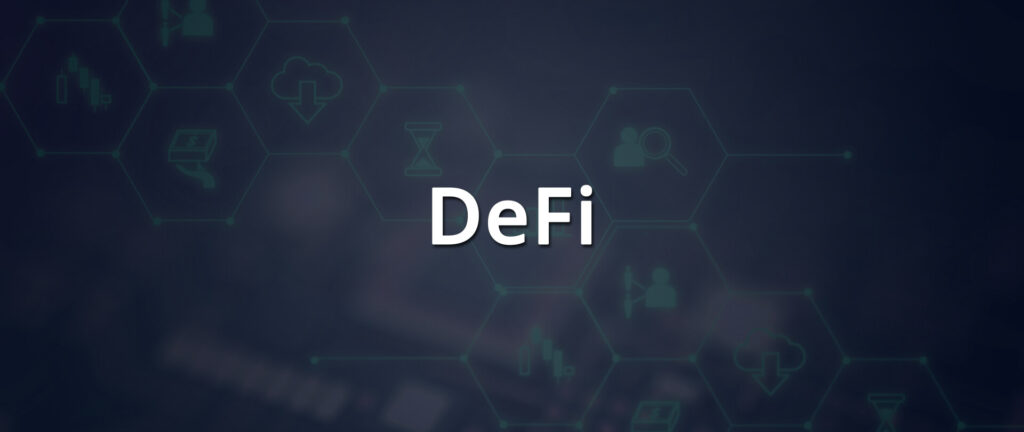
According to an estimate by exchange crypto.com, almost 1 billion people will be using cryptocurrency exchanges by the end of 2022. To make use of this opportunity, the number of people who want to be on the service-provider side of crypto and other blockchain entities has increased. One way to venture into this is by building marketplaces known as crypto exchanges. However, not everyone comes in with enough capital to build a superior crypto exchange from scratch. But this need not be a limitation because the benefit of a white-label crypto exchange triumphs building one from the root.
Let’s examine what makes ready-made solutions for exchanges stand out and why you should consider them.
- What is a crypto exchange?
- Features to look for in white-label crypto exchange solution
- Why should you choose a whitelabel crypto exchange?
- How to launch a whitelabel crypto exchange?
What is a Crypto Exchange?
A cryptocurrency exchange is a global platform, a marketplace for buying and selling cryptocurrencies. In addition to trading services, crypto exchanges provide price discovery through trading activity and cryptocurrency storage.
You can use a crypto exchange to convert one cryptocurrency to another, such as Bitcoin to Litecoin, or to buy crypto with regular currency, such as the US dollar or Euro. Exchanges uphold the current market value of the cryptocurrencies they provide. You can redeem the cryptocurrencies into regular money and withdraw the same to your bank account through crypto exchanges.
Before crypto exchanges, people traded cryptocurrency by organizing transactions in unregulated online and offline forums—like a chaotic eBay. Today, there are hundreds of cryptocurrency exchanges that provide a variety of digital assets with varying levels of security features.
There are different crypto exchanges, such as traditional, centralized, decentralized, and broker. Traditional crypto exchanges allow trading based on daily market prices. There is also a small fee charged for transactions. A third person oversees centralized exchanges called an exchange operator. It is fairly easy to trade on these platforms and link your bank account to them. However, these come with a small operator fee. Decentralized crypto exchanges are built following the concept of decentralization, where a central authority is not required to oversee the processes.
Kraken is the oldest cryptocurrency exchange that was started in 2011 in the US. Today, some of the most popular ones include Uniswap, dYdX, PancakeSwap, and Kyber.
Features To Look For in White-label Crypto Exchange Solution
White-label crypto exchanges, be they ready-made, must contain certain guaranteed features. Some of them, along with suggestions, are listed below.
Application Features
UI/UX: High care must be given to UI/UX as it forms the basis of audience interaction with the crypto exchange. A seamless UX design will include an intuitive dashboard that can navigate users to what they want from day one.
Optimum Performance: The backend development of the exchange is crucial to maintain optimum performance. A delay in website delivery time only wades away the users. Therefore much care must be given to optimizing delivery and reducing the API time as much as possible.
Accessibility: Users must be able to access the exchange over multiple devices. This might include laptops, tablets, and smartphones. Cross-device compatibility is essential for the wide adoption of the exchange.
Customizable: Customization is one of the most important features of a white-label solution because, without it, you just have a template. Your UI branding is what sets you apart from other exchanges. You can add features based on particular market research related to your specific focus points, or you can choose from the thousand different varieties of options available.
Integrations: Linking the white-label crypto exchange to essential third-party sites involves payment gateways, KYC, AML, modules, and more. So make sure the white-label solution you choose allows enough freedom to link to the ones of your choice.
Security Features
Encryption: It is good for a white-label platform to have AES 256 encryption for data in rest and transit. To ensure further integrity, PII data is also encrypted. Additional encryption needs can be deployed based on specific requests.
Firewall, DoS, and DDoS: Some of the most sought Network Security features are included in a white-label solution. This includes Server Hardening, Web Application Firewall, Ports Management, and 50 higher security checks. The DoS, DDoS Protection, keeps unauthorized and malicious traffic in check.
Managing Blacklist: Users correlating to suspicious activities based on IP address and geo-location must be blocked. For this, the platform must have a blacklist management system. The management system should have variables for tracking user identities.
2FA Authentication: 2FA authentication system is proven to be the most effective against cyber thefts. Every single online entity now provides a 2FA security system that has become the staple of internet security. Examples of 2-factor authentications include Google authenticator, Re-Captcha, etc.
Why Should You Choose A White-label Crypto Exchange?
There are a lot of benefits when you use white-label crypto exchange software instead of developing the whole platform from scratch. Let us see why people prefer such software rather than the alternative.
Easy Way To Enter The Crypto Market
The competition in the crypto services domain is growing higher day by day. Highly innovative platforms are being launched every day. So to enter such a competitive market, a white-label platform gives you a fully developed and tested wireframe of a top-notch crypto exchange. And as we discussed earlier, all you need to do is brand it with customizations. This way, you pass all the security and quality checks and can run the exchange smoothly in a few days. It is considerably more efficient and appropriate than creating a cryptocurrency platform from scratch.
Significant Cost Reduction
Launching white-label software for the crypto exchange can be less expensive than building a cryptocurrency platform from scratch. You don’t have to spend money on infrastructure expenditures, which can help firms keep prices down and provide customers with more reasonably priced services. Also, a company can reduce the cost of employing developers to build the software.
Increased Adaptability
A white-label platform lets you incorporate the latest corporate needs into your platforms. Adapting to the recent user trends is one way in which you can stay time-relevant. Some adaptive features include multi-language accessibility to facilitate global adoption, a 24/7 support system for customers, etc. Lately, platforms have also added a token launch system to enable users to launch their tokens.
Improved Security
The additional security features provided by white-label crypto exchanges assist in safeguarding data. First of all, transactions cannot be modified or removed due to the nature of the blockchain. Additional protection measures exist, including fraud monitoring and 2FA. To further safeguard user data during transactions, SSL encryption, which helps to ensure that data security and prevents data theft, can be employed.
How To Launch A White-label Crypto Exchange Platform?
Two basic requirements of a crypto exchange platform are that – the users must be able to buy and sell without hassle, and the admins must be able to conduct operation management. Overall, two broad categories of crypto exchange development include a user module and an admin module. This section will discuss the development flow for enhancing the white-label crypto exchange, covering the choice of white-label, general features, and user and admin modules.
Platform Location
Finding the right location for white-label exchange software is the first step. Several countries currently prohibit using cryptocurrencies outright, while others impose some restrictions. Developing and launching your platform in a country that accepts it without restrictions is critical.
Picking A White-label
This step requires you to select the legal cryptocurrency exchange software you want to develop. There are currently several types on the market, and every cryptocurrency exchange falls into one of these categories. Before you begin, decide whether you want to build a decentralized, centralized, or hybrid exchange platform.
Platform Architechture
It is now critical to begin designing the platform’s architecture. This step necessitates the coordination of several factors in harmony. Some key components are a trading engine, an engaging user interface, a multi-cryptocurrency wallet, and a powerful admin panel.
User Module
Fundamentally, the customer should be able to register, identify and verify themselves using KYC documents and should also be able to link their crypto wallet for storage. Market analysis and relevant data can also be added to help customers make a conscious choice.
Admin Module
The admin maintains the integrity of the platform with operational services. An admin of the cryptocurrency exchange should be able to view a customer’s profile and can also delete it if found unauthentic. Other features for admins in a crypto exchange include fee management and trade configurations.
Tech Stack
Some tech stack recommendations for a crypto exchange platform include Angular 10, PHP, MySql, Redis, and Go. Angular 10 is essential for front-end development, such as dashboard designs. Whereas PHP and MySql are general-purpose scriptings used for database management. Redis is used for in-memory data store. Go includes garbage collection, memory safety, structural typing, etc.
Marketplace Legalities
Any exchange must follow the country’s regulatory guidelines. These rules are subject to change, and keeping up with these changes can be difficult. As a result, it is preferable to hire a legal team to ensure that the platform follows all rules and mandates.
Payment Integrations
This step requires collaboration with a payment provider to process fiat currency payments. Find a reputable payment processor that offers various online services and benefits. Consider partnering with a major bank that can process funds quickly. This step may be beneficial to the user base.
Security Protocols
White-label exchange software must include a comprehensive set of security features. Currently, cryptocurrency exchange software is the most popular target for hackers. Several exchanges have security flaws and loopholes, making it easy for hackers to steal large sums of cryptocurrency. Data encryption, two-step verification, and HTTPS authentication are key features to improve the site’s security and increase user trust. Other general security protocols include session, error, and configuration management.
Beta Testing
This step aids in the detection of any errors or flaws in the product. This way, you can eliminate these problems and have an error-free product. Your white-label crypto exchange will be ready to launch after completing beta testing. The development team will now deploy the product on the desired blockchain network.
Sustaining Relevancy
A dedicated customer support channel is required for post-launch work—users unfamiliar with your product’s work can get answers from the support network. Consider regular updates and quality enhancements to ensure the platform remains relevant among users.
Closing Thoughts
If cryptocurrency is the next evolution of money and trade, crypto exchanges will undoubtedly be the biggest beneficiaries of technology. Excellent exchanges may even have the potential to dominate the world’s financial markets, rendering banks obsolete.
A white-label crypto exchange platform is a better option than going with a custom development solution. Because developing a white-label crypto trading platform entails arduous tasks such as market research, strategizing, designing, and building, it is critical for businesses to select a technology provider best suited to their requirements. The increased demand for crypto exchanges means it is time to monetize this trend.


